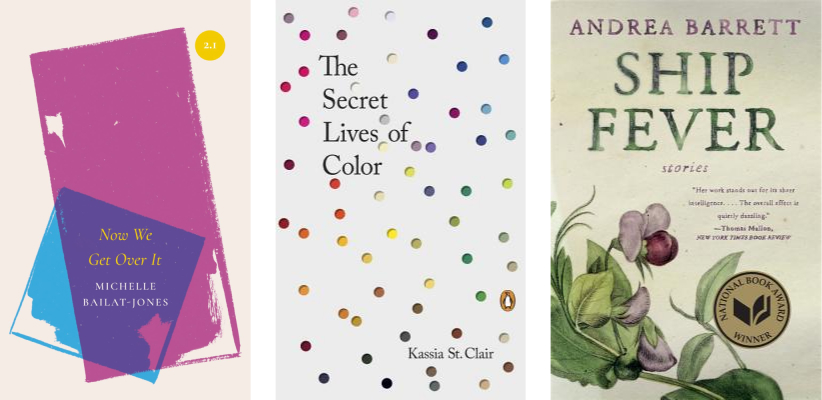Whatcha Reading, Kirsten Sundberg Lunstrum?
Every week we ask an interesting figure what they're digging into. Have ideas who we should reach out to? Let it fly: info@seattlereviewofbooks.com. Want to read more? Check out the archives.
Kirsten Sundberg Lunstrum is the author of three collections of short fiction, most recently What We Do With the Wreckage, the winner of the 2017 Flannery O’Connor Award for Short Fiction — and which was also popular with other Whatcha Reading contributors.
Come see Kirsten in conversation with local author Sarah Cannon, author of The Shame of Losing, this Tuesday, February 5th at the Elliott Bay Book Company.

What are you reading now?
I’ve just discovered UK-based Platypus Press’s Shorts — a series of individually released digital short stories — and I’m happily working my way through the most recent issues, starting with January’s release, “Now We Get Over It,” by Seattle-native Michelle Bailat-Jones (whose most recent publication is the lovely and moving novel Unfurled, published in October of 2018 by Ig Publishing).
“Now We Get Over It” is a quiet and technically beautiful story. It follows Laura, a new mother, through the first weeks after her son’s delivery into the world, and it so perfectly captures the disorientation, unexpected emptiness, and muddy fatigue that many mothers experience during the early months of parenthood. Bailat-Jones’s writing is precise, and reading her prose called up in me the exact dreamy melancholy and unexpected grief I recall from my own first days as a new mother. Laura’s repeated variations on the line Everything is fine, I’m really fine, I’m going to be fine run like cracks across the polished surface of this story, and by the last page I felt exactly as fractured as Laura herself.
I can’t wait to read the rest of the stories in this series.
What did you read last?
I bought myself Kassia St. Clair’s The Secret Lives of Color at the end of December, and reading a few pages of it each night before bed became my daily gift to myself throughout the first month of the new year. Several people had recommended the book to me — among them Seattle poet Catherine Bull, who said the book’s rich and vivid exploration of the history of colors was working its way into her poems; and also Seattle artist Drie Chapek (whose show In the Quiet opens at the Greg Kucera Gallery at the end of this month). I was intrigued, bought the book, and then found myself savoring every page. Opening the book each night to read St. Clair’s detailed, fascinating, and visually evocative histories was like opening a box of sweets. I loved everything about this gorgeous book.
What are you reading next?
Next on my list is a re-read, actually, of a book I’ve loved for years: Andrea Barrett’s story collection Ship Fever. I’m teaching a high school creative writing class this year, and in February and March we’re focusing on integrating history and science in our short fiction. I’m turning (back) to Barrett’s collection not only because of her mastery of short story form, but because of the intricacy with which she is able to lace together fact and fiction. Next week my students will read her story “Rare Bird,” which follows two 18th century women scientists as they defy a widely accepted theory about swallows’ winter migration — and set themselves apart from the exclusively male circle dominating scientific study and knowledge. It’s a beautiful, perfectly put-together story, and — like all of Barrett’s stories — I learn more about how to write fiction each time I read it.